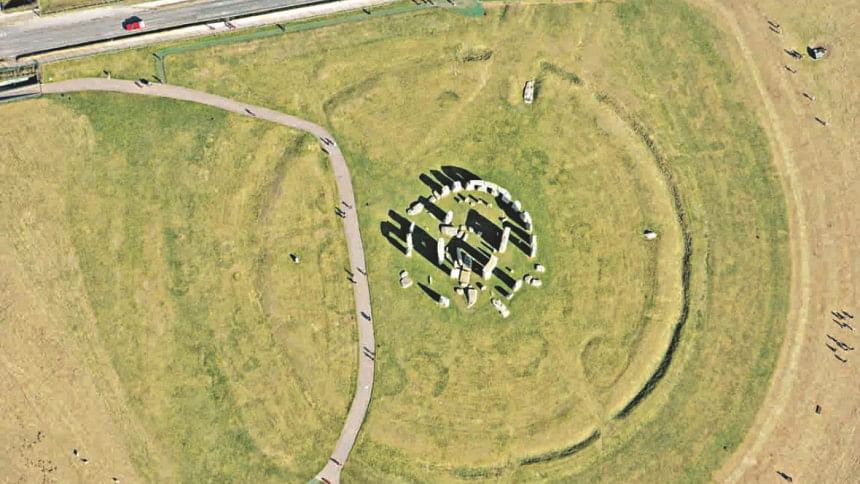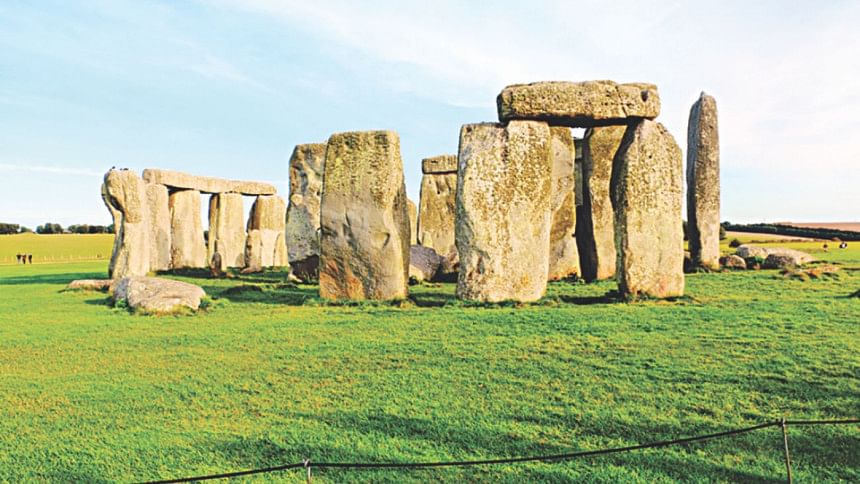Stonehenge - the mysterious World Heritage Site

As the visit to mountains and sea let us feel and realise their magnificence, the third epitome could be Stonehenge, an English world heritage site. It is an iconic prehistoric sacred monument dating back more than 5000 years ago, from the Neolithic and Bronze age era, and still, it encapsulates its enigma for the modern age. Historians and scholars have yet to confirm as to why and how these magnificent standing stones were set up in a circular setup.
There are lots of stories and myths that have carried over the ages, but the most believable one is that Stonehenge was used as a kind of clock to measure the daylight time with regard to the movement of the shadow of the stones, ensued by the motion of the sun from east to west.
But this claim still has loose ends to be tied up, for as to what was the compulsion or necessity of setting up such colossal stones whereas the same purpose could be served with smaller stones. Historians are still on the search to exactly figure out why this place was made.
I have always been intrigued to visit this spot, which was declared a world heritage site by UNESCO, back in 1986.
On a fine sunny morning, I started from London. It takes around 1.5 hours to cover the 90 miles from central London to Salisbury.
As my car was driving through the vast chalky plain towards the spot, I could see Stonehenge from afar due its height of over 30 feet. The whole Stonehenge area is 26 km square and demarcated with security barbed wire.
After reaching the gate, which is still some ways away from the main attraction, I was required to have my ticket. There are only a few days when it is free to enter the premises.
I entered the premises through a path directing the visitors to the bus stops, from where shuttle buses would take visitors to the spot and bring them back to the exit gate, because it is a tiring 1.7 mile walk up to the attraction though the chalky plain. Because of this, the bus service, which comes free with the tickets, comes in quite handy.

When I laid eyes on it, all I could do was gaze at the beauty and magnificence of the stones and wonder how mediaeval humans could build something like this. Through the ages, Stonehenge evolves gradually in terms of stone position, looks and outer area landscape.
Visitors are not allowed to touch the stones for fear of desecrating the sanctity of the stones. Therefore, a circular string is seen around the stone-circle. Visitors can get as close as 10 yards away from the stones. Talking to some of the fellow visitors, it's easy to tell that many people from around the globe gather here to see this historic monument. There is a vast green field around the spot. So circulating the stone barefoot on the green soft grass gives the visitors a soothing feeling enthralled with amusement.
The truly incredible moments are at dusk and dawn, when the sun is seen going down and rise in between the stones. That is why the two solstice-events, summer and winter, are marked with pomp and gusto, with thousands of people gathering on the spot to celebrate the events. It is stringently told to not bring any food or other items to this hallowed spot in order to keep it clean and litter-free.
The words 'Seeing is Believing' totally justifies the experience of coming to this colossal monument.
As I boarded the return bus, I was reliving the enthralling site, now firmly engraved in my memory. I must say it is lifetime experience to behold such beauty.
Photo courtesy: Samiul Raijul

 For all latest news, follow The Daily Star's Google News channel.
For all latest news, follow The Daily Star's Google News channel. 



Comments